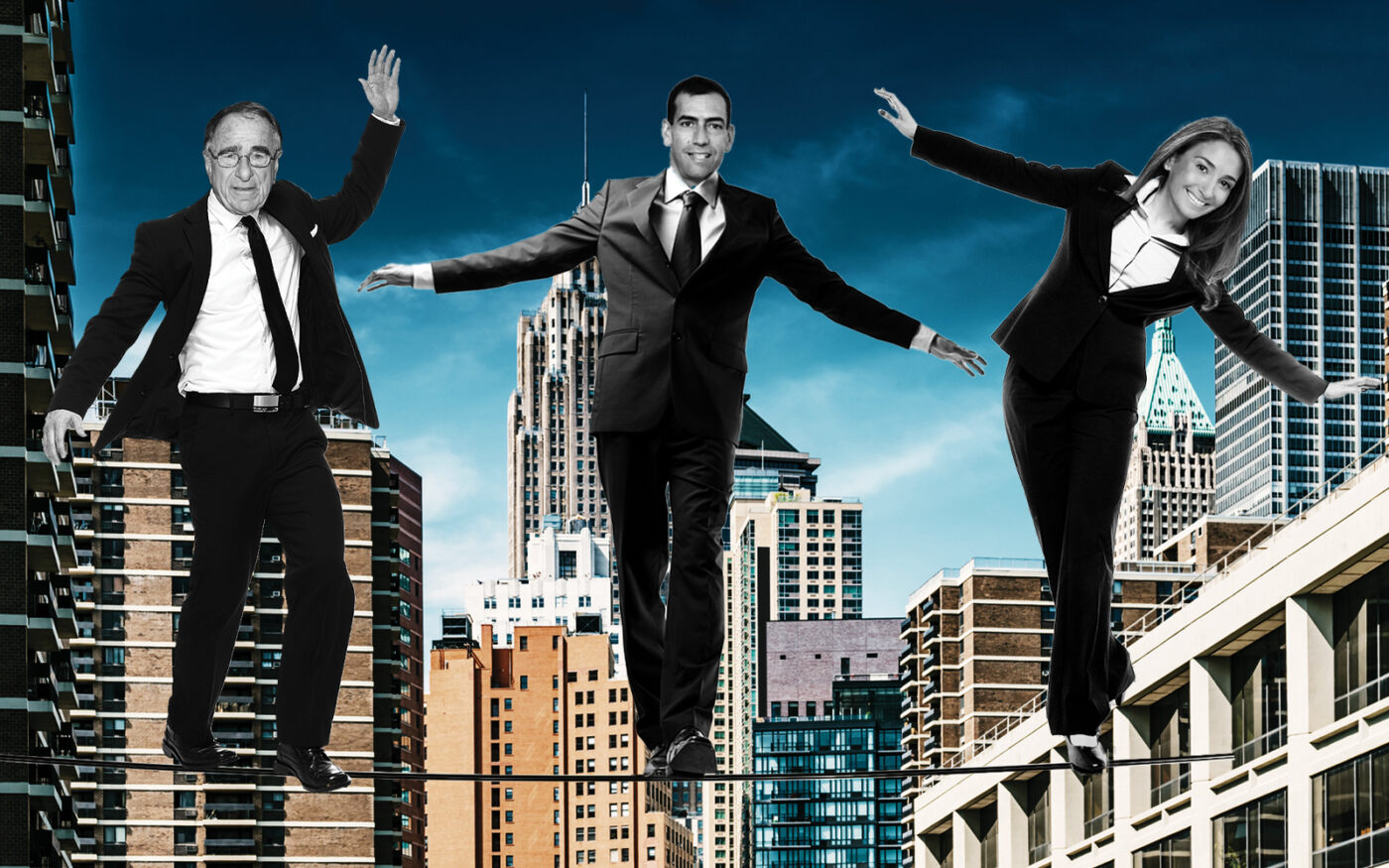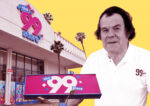Why New York’s condo market is a delicate balancing act
New condos remain in demand in New York City, but economic forces and pensive developers could dry up the inventory pipeline soon

When the anonymous buyer of the five-bedroom penthouse at One High Line went into contract for $49 million in January, the deal seemed to bode well both for its developers, the Witkoff Group and Access Industries, and for the city’s housing market.
On the Upper East Side, Miki Naftali’s firm has likewise found buyers for one boutique project after another.
And downtown, Related Companies has sold more than 265 units in the last year between its relatively affordable Tribeca Green conversion in Battery Park City and the higher-end 450 Washington Street in Tribeca.
After rock-bottom interest rates ignited a buying spree in 2021, Manhattan was left with fewer unsold new condos than at any point since 2016. Still, despite elevated mortgage rates lingering, demand is proving resilient.
“If a building is designed well and priced well, it’s selling well,” said Robin Schneiderman of Brown Harris Stevens Development Marketing.
Sales experts judge how much new condo inventory is on the market by figuring how long it would take for it to sell out. In Manhattan, that number comes to 3.2 years, which experts say sits in the Goldilocks zone. There is no glut keeping a lid on prices, yet enough new condos exist to satiate buyer demand without the turnoffs of bidding wars and price spikes.
The comfy equilibrium that exists between supply and demand in New York’s new condo market, however, won’t last forever.
Helping demand along is a large number of resale condos that are locked up, their owners handcuffed to cheap mortgages, meaning anyone looking to buy has to consider new supply. A record number of all-cash deals says the New York buyer doesn’t need to worry about high mortgage rates, while forecasts of interest rate cuts are putting less-moneyed buyers at ease.
To meet demand, plenty of builders would like to be building, but many have faced obstacles.
“The pipeline is empty,” said appraiser Jonathan Miller of Miller Samuel. “Three to four years from now, there’s going to be little condo inventory coming online. It’s going to keep pricing elevated.”
Headwinds on the supply side — higher costs and a lack of land to build on — are the cause.
“It has been hard to create new product post-Covid,” echoed Ran Eliasaf, CEO of private lender Northwind Group. Costs everywhere have gone up: 25 percent for construction, “plus insurance, plus carrying costs,” said Naftali. “Insurers are really milking the construction industry.”
The stakes of not building, however, are high, and not just for the housing market.
The slowdown means New York has missed out on tens of billions of dollars in real estate investment from institutional LPs, according to Colliers.
Haves and have-nots
The promising sales in the West Chelsea, Upper East Side and Tribeca buildings mask the unevenness of demand.
Condo buyers favor Manhattan, sales data show. They snapped up 134 new condos in the borough in February, compared to 98 in Brooklyn and 27 in Queens, according to data firm Marketproof.
But even in Manhattan, demand is segmented. In Soho, two months of inventory remain; in Greenwich Village, five months; and in Tribeca, 15 months, according to Kelly Mack, president of Corcoran Sunshine.
By contrast, there is plenty to buy in the Financial District: seven years of inventory. Buyers will be able to move into the Financial District for some time to come.
“The pipeline is empty. Three to four years from now, there’s going to be little condo inventory coming online. It’s going to keep pricing elevated.”
Recent additions include the hulking One Wall Street and the long-delayed 125 Greenwich Street, architect Rafael Viñoly’s final New York project, with 270 entry-priced units.
“FiDi is one of the easier places to develop,” said Miller, “and cheaper than prime Soho or Tribeca.”
Contrast that with 64 University Place in Greenwich Village, a smaller project whose 28 units almost all sold before construction finished. Why? It’s got “good layouts [and] good facade,” said Naftali, who helped finance the Argo Real Estate development — and most of all, “good location.”
Yet developers aren’t rushing to build a 64 University 2.0, because they can’t. There are zoning restrictions and almost nowhere to develop nearby.
Patchy plots
There is precious little land to build on in New York City in the places condo buyers want to live.
The cost of land plummeted in 2020 and remains 20 to 30 percent below pre-pandemic levels, according to land valuation expert Duane Burress. Demand slumped after the expiry of 421a froze multifamily construction, and office remains a much-diminished asset class.
For condo developers, a low cost basis in the form of cheap land is the stuff that dreams are made of — or good pitches to potential equity partners, at least.
But land owners simply aren’t selling.
“I am advising people not to,” said Bob Knakal, a top land broker. “I think things will get better.” A renewal of the 421a tax abatement would spark demand for more land deals where multifamily can be built.
“Most sellers are discretionary,” added Knakal. “That’s why every time there’s a rezoning, there’s a ton of new buildings. People wait to sell. There needs to be an incentive.”
For now, new condos are the only option for parcels with residential zoning, and only the most ambitious projects in choice locations can spring for the prices that landowners want.
“It’s hard to find development sites,” Mack said, “and when they do come up, they are smaller.”
One notable land deal this year went to Victor Sigoura’s Legion Investment, which recently bought an assemblage along Third Avenue for $920 per developed square foot. The price nears the four-figure high-water mark of 2015, according to Burress. Legion hopes to add a neighboring co-op building to its assemblage, which would allow it to build on Gramercy Park East.
If Sigoura succeeds, he may earn his buyers a coveted key to the private garden, and a substantial premium on the price of any eventual condo units at the site, just as the Zeckendorfs achieved with 18 Gramercy Park.
Legion’s project, however, will not have a meaningful impact on the city’s new condo inventory.
King of the boroughs
The largest condo project in Manhattan’s pipeline belongs to the Zeckendorfs. The famous real estate family is busy doing foundation work, alongside partners Atlas Capital and the Baupost Group, for a pair of waterfront towers with 270 condos in Hudson Square, where office complexes belonging to Google and Disney have recently risen.
The difficulty of creating new condo inventory is further compounded by a change in the size of projects that are likely to receive financing in the coming years. In essence, big is dead.
“There was a decade where it felt like we were opening one large-scale project monthly,” said Mack. “In 2024, there’s very few.”
In Manhattan, just six buildings make up a third of new condo inventory. The largest is Harry Macklowe’s One Wall Street (469 unsold units), which critics say suffers from unrealistic pricing, followed by the Waldorf towers (370 unsold), soon to begin closings after nearly a decade. At Extell’s One Manhattan Square (279 unsold), buyers can still find a rare 421a tax abatement for condo owners. Rounding out the list are the Monogram (186 unsold) at 135 East 47th Street, One High Line (177 unsold) and 547 West 47th Street (142 unsold).
As those sell, projects of similar size will not replace them.
In the next three years, some 5,400 new units will come to market in Manhattan, according to Corcoran Sunshine, with 2,500 already under construction. Historically, buyers have signed 1,500 to 2,000 new contracts per year in Manhattan, resulting in one to two years of remaining inventory by 2027, which experts say would create a very tight market.
“So few new projects have launched for sales, most that are on the market are offering immediate occupancy,” said Corcoran Sunshine’s Mack. “The next wave of projects will not offer immediate occupancy. There will be a return to people buying off floor plans.”
Demand dilemma
It’s not hard to imagine situations where buyer demand evaporates.
Falling interest rates could be a mixed blessing. They could spark condo resales, lower buyers’ appetite for costly new product and cool developers’ ambitions for new projects.
The event of a 421a renewal in the New York Legislature could bring the return of new rental development. That might draw investors and developers away from condos.
“If the city wants to solve its housing crisis with condos that list for $2,000 per square foot, all it has to do is not approve a replacement for the 421a tax abatement,” said Zach Redding of Colliers’ Capital Markets Group.
Still, hope springs eternal for those who earn their keep building new condos in New York City, especially the Brooklyn and Queens projects cheered on by impatient investors.
“I do think this is the start of a new building cycle,” said Nicholas Silvers of Tavros Capital, who expects to start building a 600-unit condo project at 24-19 Jackson Avenue in Long Island City this summer.
“Investors are looking to make up for lost time,” he said. “Literally hundreds of millions of dollars need to go out the door.”




